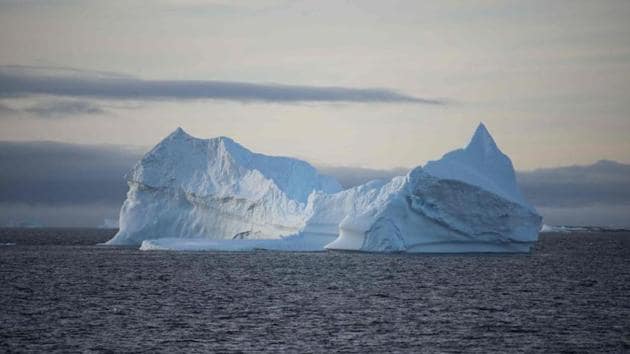Environment hazard: Lucknow scientist had predicted breaking of iceberg in 2014
Way back in 2014, a renowned scientist and environmentalist, Prof Bharat Raj Singh, director general (technical), School of Management Sciences, Lucknow had seen a wide and deep crack in the image captured by NASA satellite at western Pine Iceberg of Antarctica and had estimated its breaking and the impending dangers.
Recently between July 10 and 12, one of the biggest icebergs on record broke away from Antarctica. The one-trillion tonne iceberg, measuring 5,800 square km, which is equal to four times the area of Delhi, calved away from the Larsen C Ice Shelf in Antarctica.

However, way back in 2014, a renowned scientist and environmentalist, Prof Bharat Raj Singh, director general (technical), School of Management Sciences, Lucknow had seen a wide and deep crack in the image captured by NASA satellite at western Pine Iceberg of Antarctica and had estimated its breaking and the impending dangers.
It was also stated in his book “Global Warming: Causes, Impacts and Remedies” published at INTECH publication, Rijeka, Croatia in April 2015 edition. But, scientists asserted that with the deposition of ice over this area, the crevice can be refilled and toned.
He stated this disaster can lead to submerging of the nearby islands along with the extinction of innumerous faunas in and around. He also asserts that this phenomenon would lead to dearth and extinguish all developmental activities and facilities of us.
Prof Singh adds it is a direct consequence of the negligent exploitation of the earth’s natural resources- minerals, oil, coal, to name a few.
An un-estimated augmentation in the population score and uneven or unparallel development around us every minute is also because of this. Sweeping off the woods, loads of vehicles, sprawling of industries are adding tremendously to the wear and tear of the nature around us making direct increase in the global temperature.
The iceberg is likely to be named A68, was already floating before it broke away so there is no immediate impact on sea levels, but the calving has left the Larsen C ice shelf reduced in area by more than 12%.
The Larsen A and B ice shelves, which were situated further north on the Antarctic Peninsula, collapsed in 1995 and 2002 respectively.
Scientists estimate that if this mammoth sized iceberg’s ice thaws, the sea level could have an alarming rise of about 10 inches. Moreover, this would be a grave havoc for the routing ships and submerging of the islands in its vicinity.
What is more to account is its area which is one and a half times bigger than Goa, four times the area of New Delhi and seven times that of New York. The position will now become bad to worst not only due to rise in sea level but will have ill effect of drowning of coastal area but hat have greater impact on vaporization which may lead to storm and excessive rain fall in coming 2-3 months.




